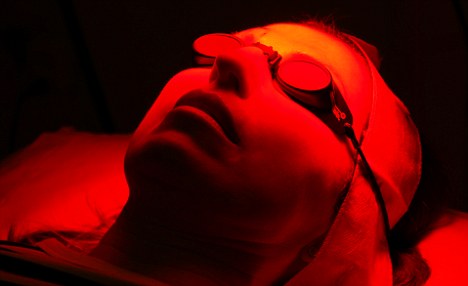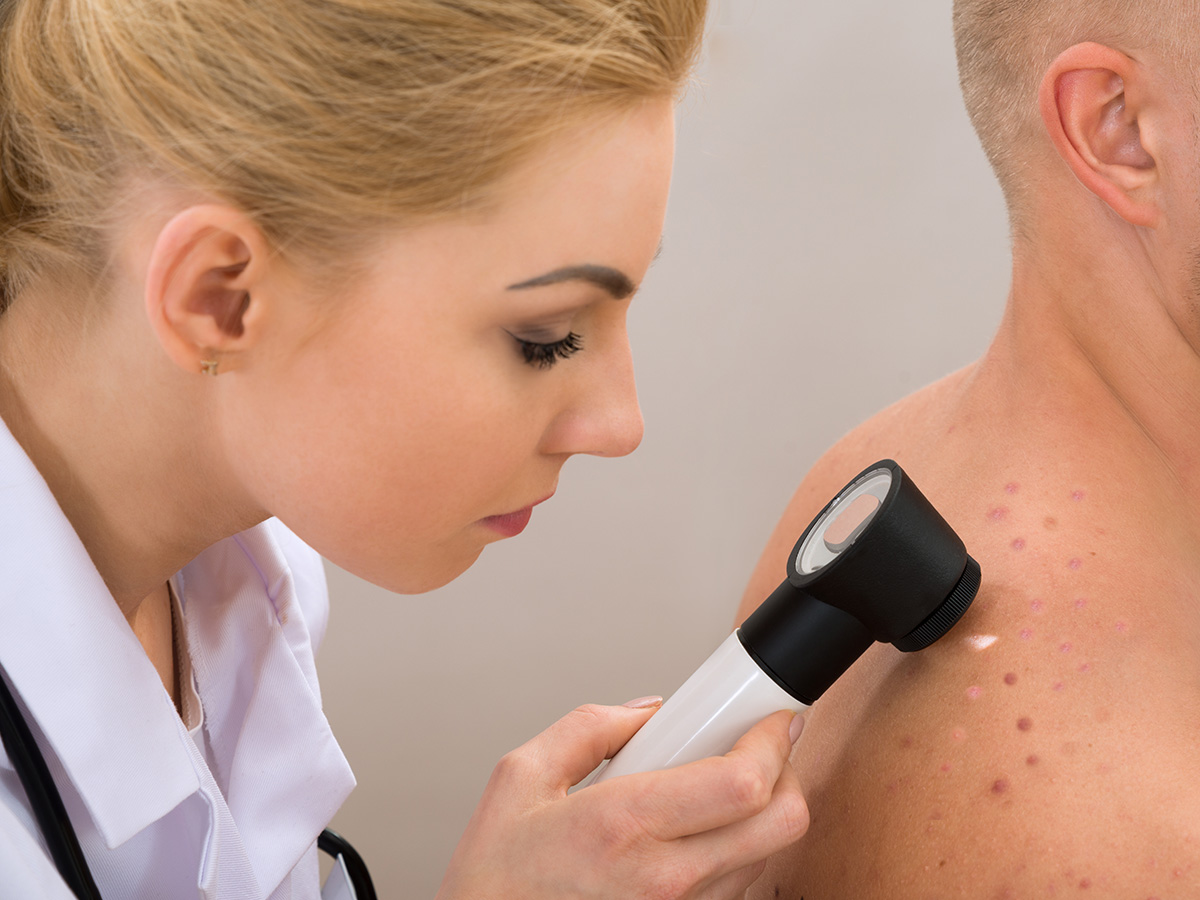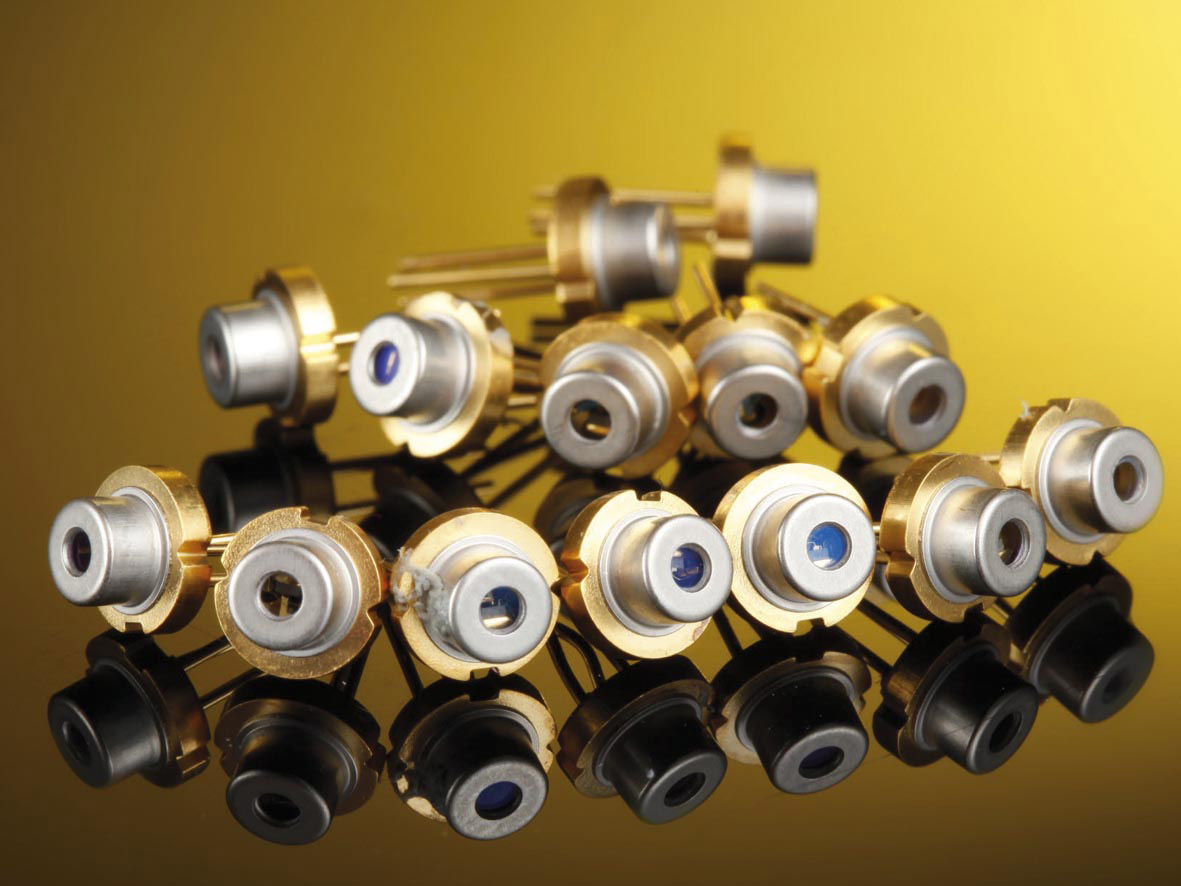
Laser use in photodynamic therapy allows for large patches of skin to undergo treatment while leaving behind little to no scarring. Courtesy of The Daily Mail.
Introduction to Photodynamic Therapy in Skin Treatment
This blog has previously discussed laser use in cosmetic skin treatments including skin resurfacing and tattoo removal. This week, however, we investigate perhaps the most important and innovative use of laser skin procedures to date: treating non-melanoma skin cancers and precancerous conditions. These treatments employ the energy of light to treat cancerous or precancerous skin conditions through the process of photodynamic therapy. Photodynamic therapy treatments offer eligible patients a minimally-invasive, laser-mediated alternative to surgical removal of affected tissue. Efficacy is high for small superficial tumors and precancerous lesions, and there are no long-term side effects. Today, photodynamic therapy is still gaining acceptance in contemporary treatment methods. Rapid advancements in solid state laser technology, however, could play a key role in development.

Non-melanoma skin cancer and actinic keratosis can be difficult to identify, but if caught early are typically easily treatable. Courtesy of Medigo.
Non-melanoma Skin Cancer Overview
Skin acts as a shield and protector over the body. It is the body’s largest organ,and as such is subject to hot temperatures, germs, and the sun. Overexposure to the UV rays emitted through sunlight cause the cells of the skin to change and behave abnormally, leading to atypical growth. These abnormalities can often become precancerous conditions or non-melanoma skin cancer. Non-melanoma skin cancer typically starts in the basal cells found in the outermost layer of skin, the epidermis. These cases of basal cell carcinoma (BCC) are the most common form of skin cancer. Furthermore, precancerous conditions of the skin is referred to as actinic keratosis. Actinic keratosis is considered precancerous because the abnormal cells are not yet cancer, but could become cancerous if left untreated.
Photodynamic Therapy Basics
Photodynamic therapy (PDT) uses a photosensitizing agent and light to target treatment areas. These photosensitizing agents are drugs either injected into the bloodstream or placed on the skin, and they only activate when hit with a certain kind of light. Researchers typically use lasers in these procedures because they emit a constant and specific wavelength. PDT uses the energy of light emitted by these lasers combined with the drug to damage or destroy the affected tissue.
Photofrin II is the most common drug used in PDT, and it concentrates deeper in tumor tissue than healthy skin. Varying wavelengths of light will react differently with Photofrin. For example, a krypton laser emitting violet light with wavelength 408 nanometers will cause the drug to fluoresce. The resulting pink glow makes it easier to identify and localize any undiscovered tumors. Similarly, a dye laser emitting red light with wavelength 630 nanometers can cause the sensitizer to react and destroy cancerous or precancerous tissue.

Advances in laser diode technology could lead to a major breakthrough in modern photodynamic therapy methods. Courtesy of Walmart.
Development of Photodynamic Therapy in Non-Melanoma Treatments
Photodynamic therapy is not a new method in skin treatment. The roots of PDT development can be attributed to Niels Finsen, who in 1903 won the Nobel Prize in Medicine for treating skin diseases with concentrated light radiation. This lead to over a century of research into the behavior of light in skin tissue. Today, studies focus on optimal PDT treatment for oncological purposes. Advances in the equipment for light delivery are the most crucial element of PDT development. Dr. Alexiades-Armenakas summarized the five main characteristics of an ideal light source for PDT to treat non-melanoma skin cancer as follows:
- The source should be absorbed well by the photosensitizer
- The source should be able to reach a desirable penetration depth
- The source should emit enough photons for a long enough duration to drive the PDT reaction
- The source should administer these photons rapidly
- Lastly and importantly, the source should cause minimal discomfort to the patient
Expense and size are also important factors in popularizing PDT treatment. Potentially ideal light sources for PDT include CO2, pulsed-dye, and solid state lasers. Though these studies are still inconclusive, researchers hold particular interest in solid state lasers due to their relative simplicity. Diode lasers are cheap, small, and reliable. Diodes, however, have a fixed wavelength and are therefore limited for use in research with different photosensitizing drugs.
Further Implications of PDT in Skin Cancer and Actinic Keratosis Treatments
Skin cancer is unfortunately common, and diagnosis rates are rising at about 5% every year. While photodynamic therapy treatments of non-melanoma skin cancer have shown to be effective in the short-term, contemporary methods are too new to determine recurrence rates. Researchers are however hopeful that using lasers as a coherent light source could breakthrough as a primary treatment method when combined with PDT. Laser-mediated use in actinic keratosis conditions remain extremely promising. In one study, researchers found that one session of treatment almost completely cleared the affected area and patients felt little to no pain. Treating non-melanoma and actinic keratosis conditions with light could be the next frontier for lasers in medicine. Photodynamic therapy presents a method to combat the harmful affects of UV rays on the skin – to fight light with light.

Photodynamic therapy is looking good for spots removal.
These treatments employ the energy of light to treat cancerous or precancerous skin conditions through the process of photodynamic therapy. Photodynamic therapy treatments offer eligible patients a minimally-invasive, laser-mediated alternative to surgical removal of affected tissue. Efficacy is high for small superficial tumors and precancerous lesions, and there are no long-term side effects. Today, photodynamic therapy is still gaining acceptance in contemporary treatment methods. Rapid advancements in solid state laser technology, however, could play a key role in development.
Medicine for treating skin diseases with concentrated light radiation. This lead to over a century of research into the behavior of light in skin tissue. Today, studies focus on optimal PDT treatment for oncological purposes. Advances in the equipment for light delivery are the most crucial element of PDT development.